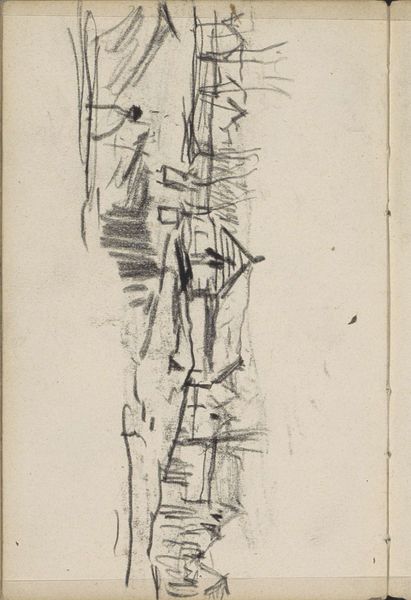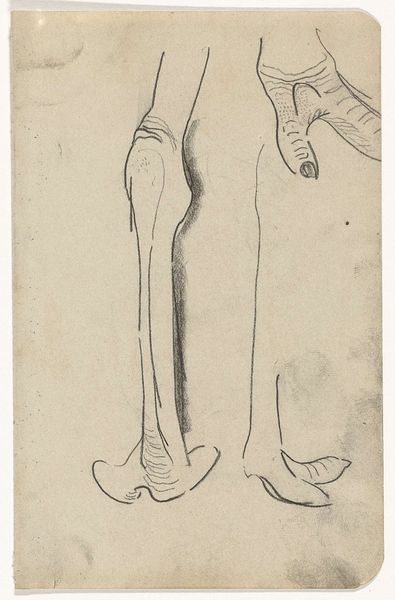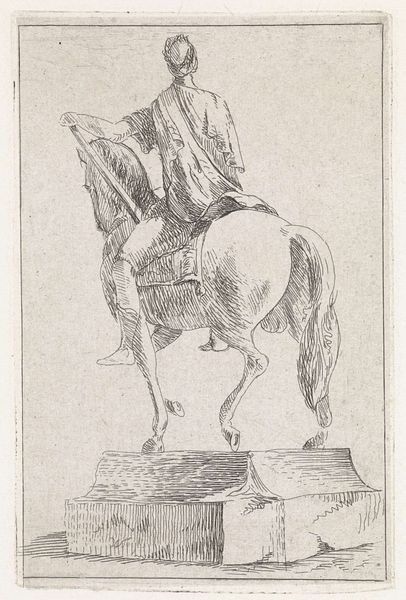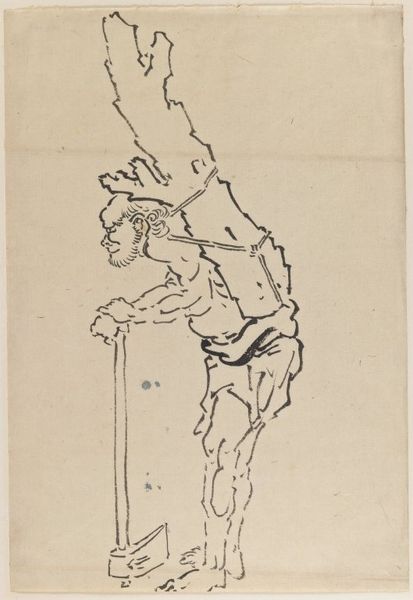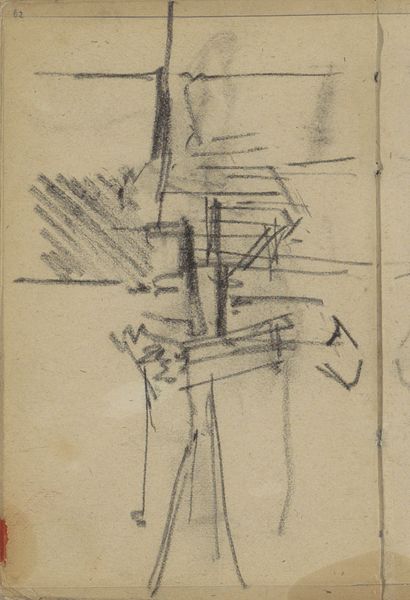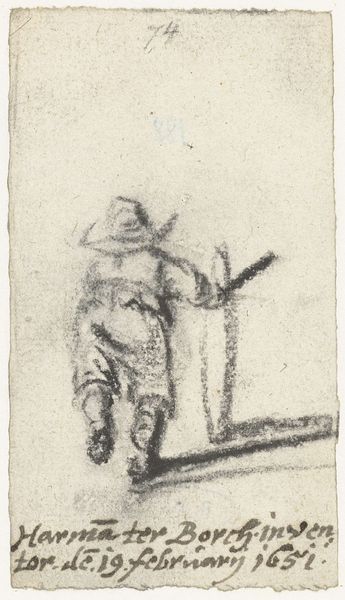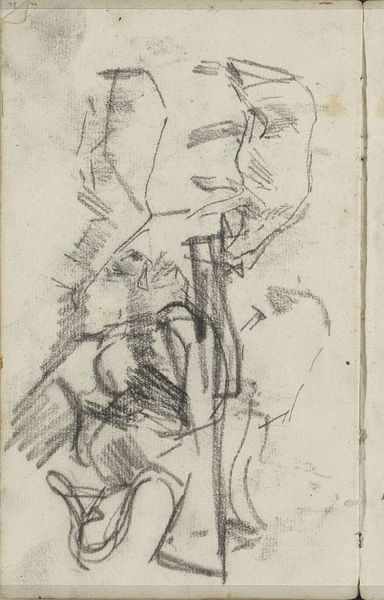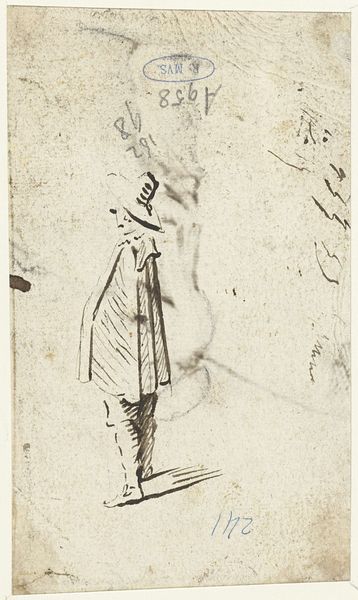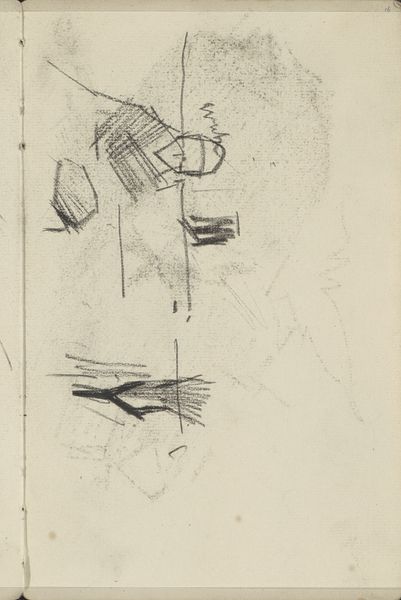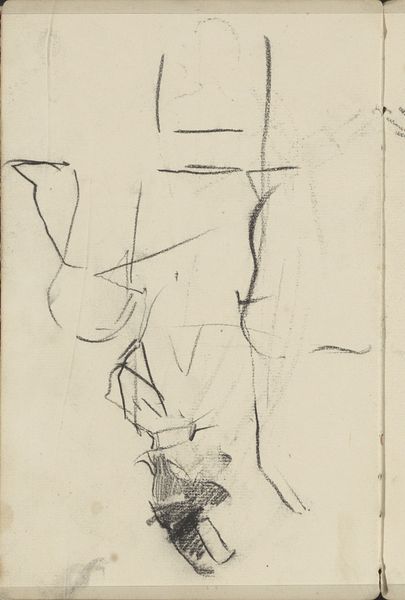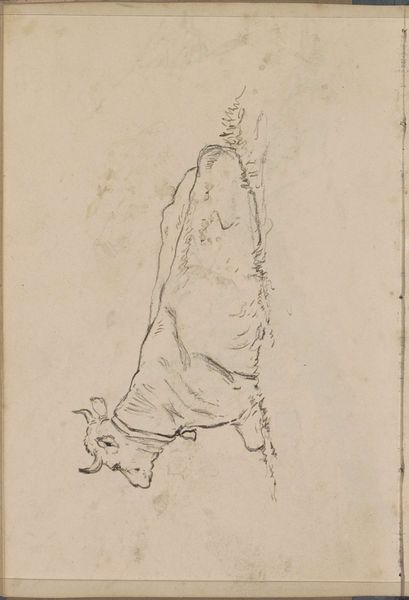
#
amateur sketch
#
toned paper
#
light pencil work
#
quirky sketch
# print
#
pencil sketch
#
old engraving style
#
personal sketchbook
#
pen-ink sketch
#
sketchbook drawing
#
sketchbook art
Dimensions: image: 20 × 14.13 cm (7 7/8 × 5 9/16 in.) sheet: 25.88 × 22.54 cm (10 3/16 × 8 7/8 in.)
Copyright: National Gallery of Art: CC0 1.0
Editor: This is Picasso's "Mademoiselle Léonie, First Plate," created in 1910. It’s a print, and what strikes me immediately is its skeletal quality, almost as if the figure is being deconstructed right before our eyes. What do you see in this piece? Curator: Formally, it presents a fascinating study in line and volume. Notice how Picasso reduces the figure to its essential geometric components. The planes intersect, creating a tension between two- and three-dimensionality. Editor: It's definitely playing with perspective. Is that intentional, to confuse the viewer? Curator: Perhaps not to confuse, but to challenge our perception. Consider the figure's head: it's fragmented, yet we still perceive it as a head. This tension between abstraction and representation is key to understanding Picasso's early cubist explorations. The lines themselves are not descriptive, they are constructive. They dictate the form. Do you find any relationship between lines and planes in the construction of this print? Editor: Yes, absolutely! It feels as though each line is carefully placed to define a specific plane, contributing to the overall structure. Like a wireframe. Curator: Precisely! The texture of the printmaking further enriches the artwork and speaks volumes regarding its materiality. Editor: Seeing how Picasso uses basic lines and shapes to build a complex figure really sheds light on how revolutionary his approach was. Curator: Indeed. And it highlights the enduring power of formal elements in conveying artistic intent.
Comments
No comments
Be the first to comment and join the conversation on the ultimate creative platform.
